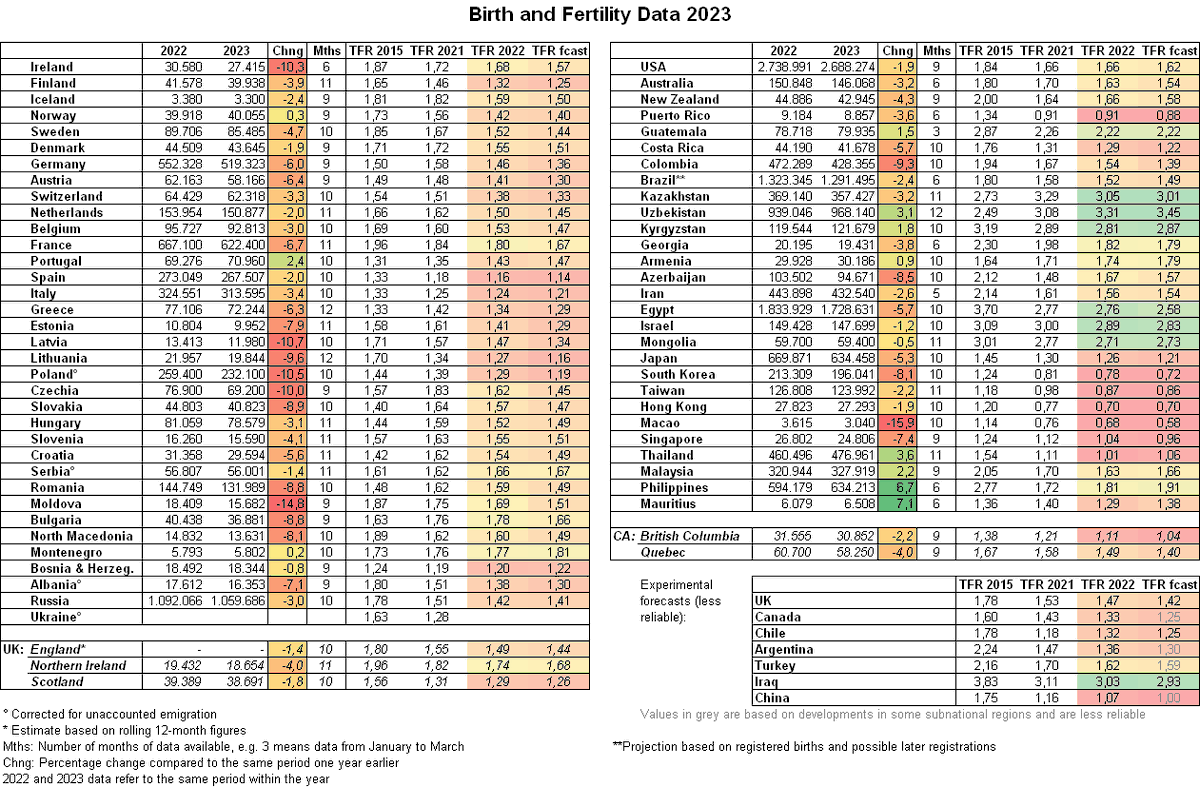As global birthrates continue to plunge, most people still aren't aware of the severity of the crisis. A major problem is that the data sources most rely on to follow fertility trends haven't kept up with the dramatic decline of recent years. Important 🧵, please share!
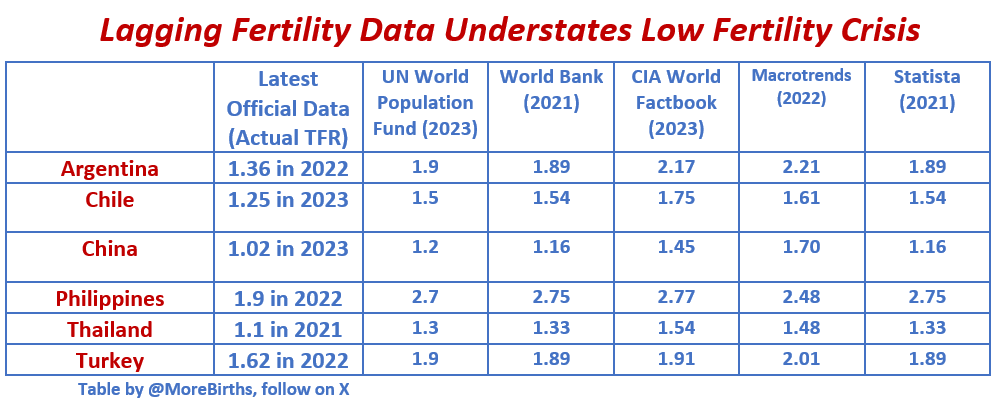
First, Argentina. Official data for 2022 show Argentina fertility at 1.36. The source is RENAPER: Registro Nacional de las Personas - the agency in 🇦🇷 that is responsible for vital statistics. Part of the Argentine Ministry of the Interior. (2/11) https://t.co/AwyCbxPtsh
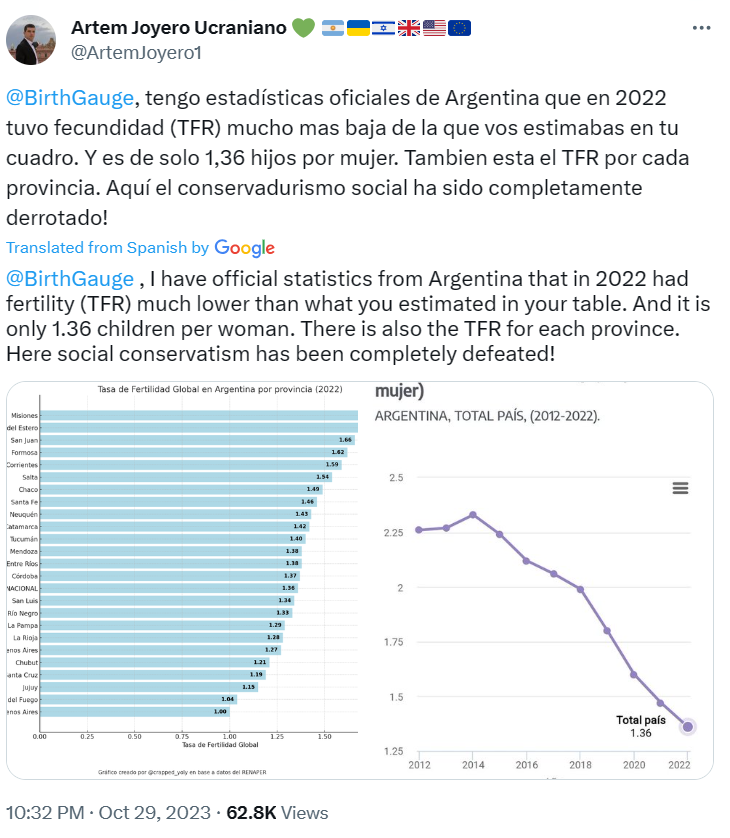
Fertility in Argentina collapsed rapidly from ~2.2 in 2014 and was likely ~1.3 in 2023. Yet the UN, Worldbank and Statista each still report Argentine fertility at around 1.9 births per woman. And the CIA Factbook and Macrotrends still report the ten-year-old 2.2 figure! (3/11)
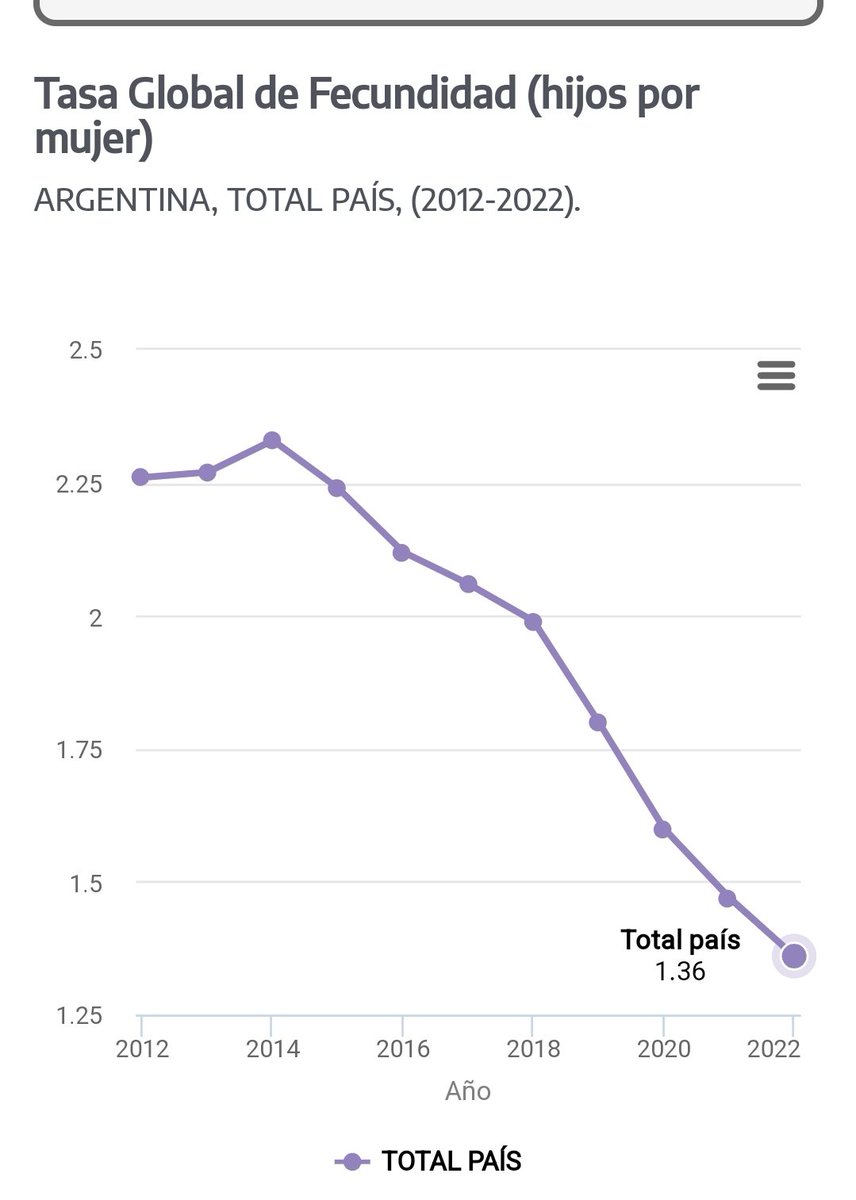
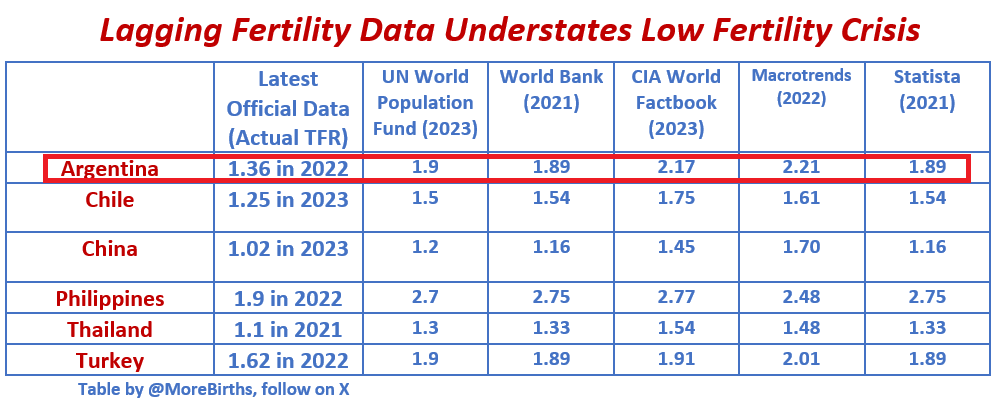
Chile is the next example. Like Argentina, it has seen a catastrophic fertility drop. The account @BirthGauge, which has been following Chilean national statistics carefully, estimates 2023 TFR at 1.25. (4/11) https://t.co/v5udRhBYFa
Chile registered 187,482 births in 2023, 5.6% fewer than in 2022. The TFR declined from 1.32 to 1.25 kids per woman, which is still a bit higher than the all-time-low of 1.18 in 2021.
— Birth Gauge (@BirthGauge) January 5, 2024
But if you Google 'Chile fertility rate' you will get very out-of-date Worldbank numbers together with Argentine figures that are 0.55 births per woman too high! The other sources follow and are similar. Wikipedia relies on this same group. (5/11)
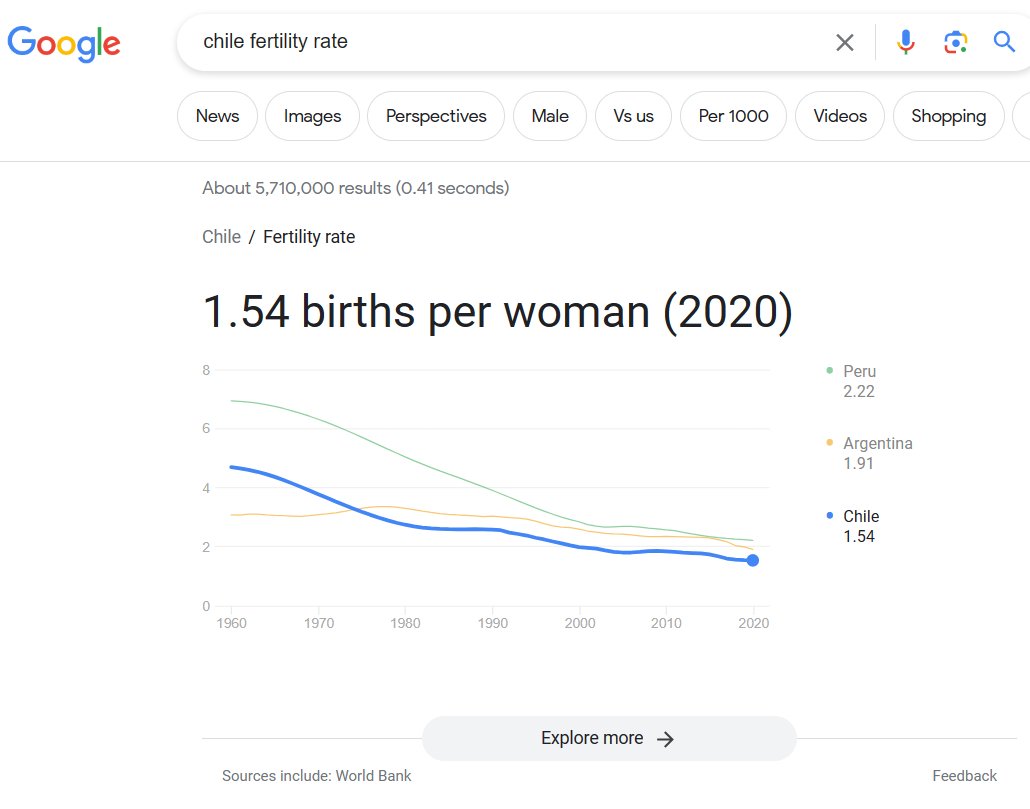
Next, China. China released its official data for 2023 on January 17th. China's NBS reported 9.02 million births for a TFR of 1.02. Chinese-American demographer @fuxianyi, who was pivotal in getting China's one-child policy removed, reports: https://t.co/7vRgTE4UVt (6/11)
Please pass it on to the journalists. China has just released its official population figures for 2023. The attached chart is my commentary. pic.twitter.com/D3SOzevN4Y
— 易富贤Yi Fuxian《大国空巢》 (@fuxianyi) January 17, 2024
Many observers, including @fuxianyi, and @MoreBirths, think China's fertility numbers may be lower still, given the history of over-reporting births. But even taking China's official numbers at face value, the most relied-on sources wildly understate the Chinese collapse. (7/11)
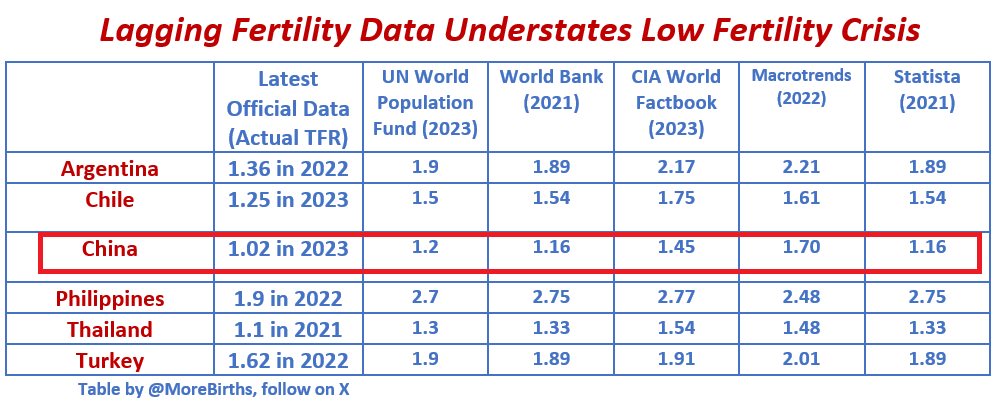
Next, the Philippines. Helpfully the Philippine Statistics Authority published a huge report that gives TFR on page 71, at 1.9. Yet the UN, World Bank and the CIA Factbook are at ~2.7, suggesting TFR well-above replacement instead of well-below. (8/11) https://t.co/ePTpCiMzkT


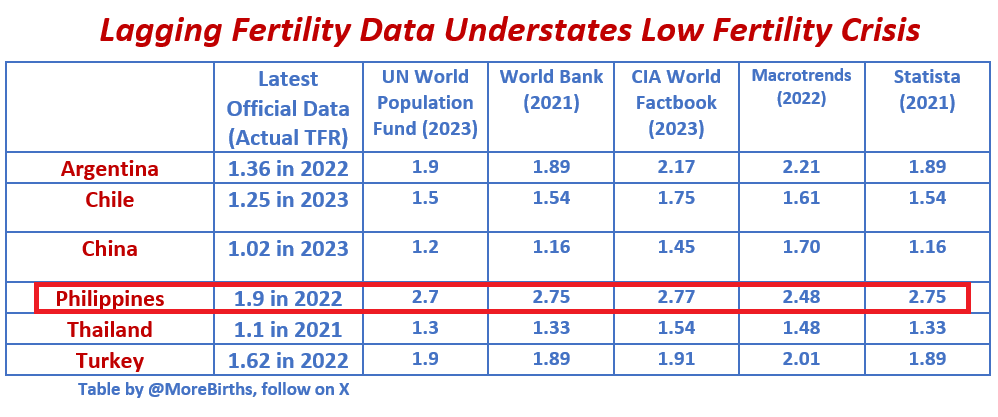
What about Thailand? @BirthGauge reports 1.1 births per woman, citing Thailand's official government website. A disastrous fall to ultra-low fertility. Again, all the sources are way behind the times. (9/11) https://t.co/dxNoR3KDDf
Thailand's fertility level is succumbing before our eyes. This year below 1.1 kids per woman, next year below 1.0? https://t.co/jXu8dI7IpH
— Birth Gauge (@BirthGauge) June 2, 2022
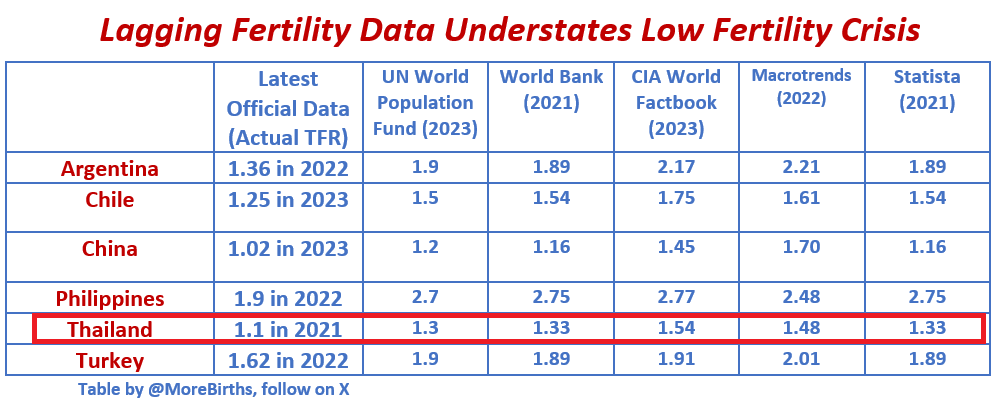
Finally, Turkey. Demographer @masagget reports their TFR as 1.62, well below replacement, citing the Turkish government website. Meanwhile, each of the major sources is bunched around 1.9-2, implying no problem at all! (10/11) https://t.co/VjlkzAtupf
Turkey 2022 birth stats
— KUANYSH 𐰌 (@masagget) May 15, 2023
Number of births decline -4,39%
2022 - 1,035,795
2021 - 1,083,336
TFR 1.62 (1.71 in 2021)https://t.co/DL6mNwUs0G pic.twitter.com/uA1UGLAZkp
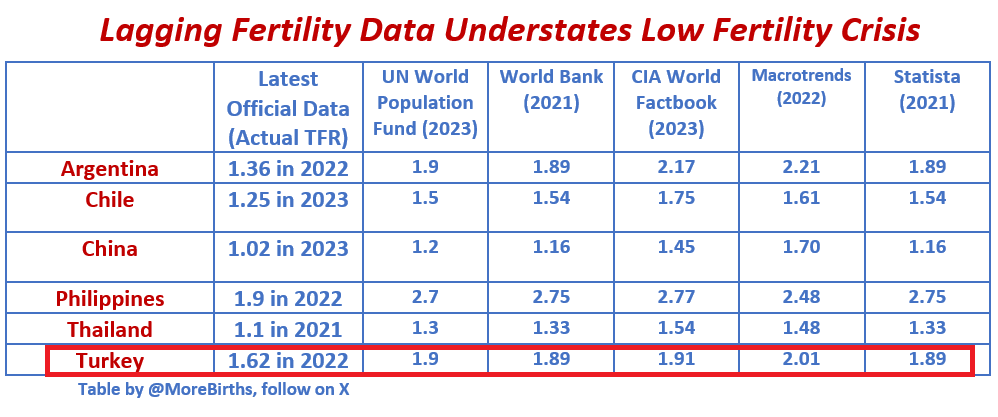
Birthrates have plunged catastrophically since 2015 in many countries, but most people don't even realize the problem yet, partly because of lagging fertility data. Here is better data by @BirthGauge. Follow @MoreBirths for more on this crisis and its solutions. (11/11)
